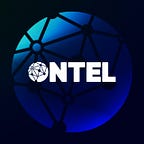What is Web 3.0?
Web 3.0 is the third generation of the internet, powered by artificial intelligence and blockchain to deliver personalized information and personalize data ownership. It is an intelligent web technology that provides personalized information through artificial intelligence from existing services and enhances personal data ownership and security through blockchain.
The Web 3.0 era is expected to be even more exciting because it is a web technology that combines artificial intelligence and blockchain, two fields that are gaining attention in recent years. Let’s take a look at how Web 3.0 came about through Web 1.0 and Web 2.0, and the future of Web 3.0 centered on blockchain.
Web 1.0 and Web 2.0
If we were to categorize web technology into eras, the past was Web 1.0, the present is Web 2.0, and the future is Web 3.0. So how has web technology evolved over the years?
Web 1.0
Web 1.0 was the early, “read” centric internet technology. In the past, web pages only allowed you to view information provided by their owners. You can think of it as simply the internet representation of news, books, etc.
If you look at the image of the first web page above, it’s easy to understand that it’s a “read only” page — you can’t post your own information on it, you can only see what’s provided.
Web 2.0
Web 2.0 is the shift from the previous ‘read’ centered internet technology to ‘write’, and with it, the interaction of different information. Within the platforms provided, we are not only able to view information created by others, but we are also able to publish information ourselves.
Web 2.0, which allows for two-way communication with a wide range of people on the web, has become increasingly active over time. The proliferation of smartphones gave Web 2.0 a boost. We live in the Web 2.0 era, where we use our smartphones for social networking, gaming, and other activities on the web.
Problems with Web 2.0
While Web 2.0’s ability to communicate freely has increased information sharing by leaps and bounds, there is a downside. It has reduced the core value of the web: openness.
With Web 2.0, the information we create is controlled by platforms, and platforms monetize the information and data you create. The platforms use the personal information and data they own to create advertising products, and the users of the products pay the platforms to advertise to them. But Web 2.0 doesn’t give the money back to the individuals who are the source of the information.
The difference between Web 2.0 and Web 3.0
Web 3.0 aims to create a personalized internet experience by enabling individuals to go beyond “reading” and “writing” information to “owning” it. Therefore, the biggest difference between Web 2.0 and Web 3.0 is who owns the information. In Web 2.0, the platform owned the information; in Web 3.0, the individual owns the information.
Web 3.0 and blockchain
Blockchain is becoming increasingly popular for Web 3.0 configurations because of its ability to increase security through encryption and decentralization of information. The direct exchange of information between users can be configured with blockchain, and because each block is linked together, it is difficult to tamper with. Blockchain technology also shifts the operating entity from the platform to the network, as information is once again owned by the individual, not the platform.
In the Web 3.0 era, information belongs to individuals, not platforms. It’s a decentralization of information from being centralized to being scattered once again. It is important to secure information that is scattered among individuals because it is difficult for an individual to perform professional security. Web 3.0 needs blockchain to have a system structure that is tamper-proof, and for information to be owned by individuals rather than centralized in one place.
🌐ONTEL Community
Homepage : https://ontellabs.com/
Telegram : https://t.me/ONTELoffical
Twitter : https://twitter.com/ONTELofficial
